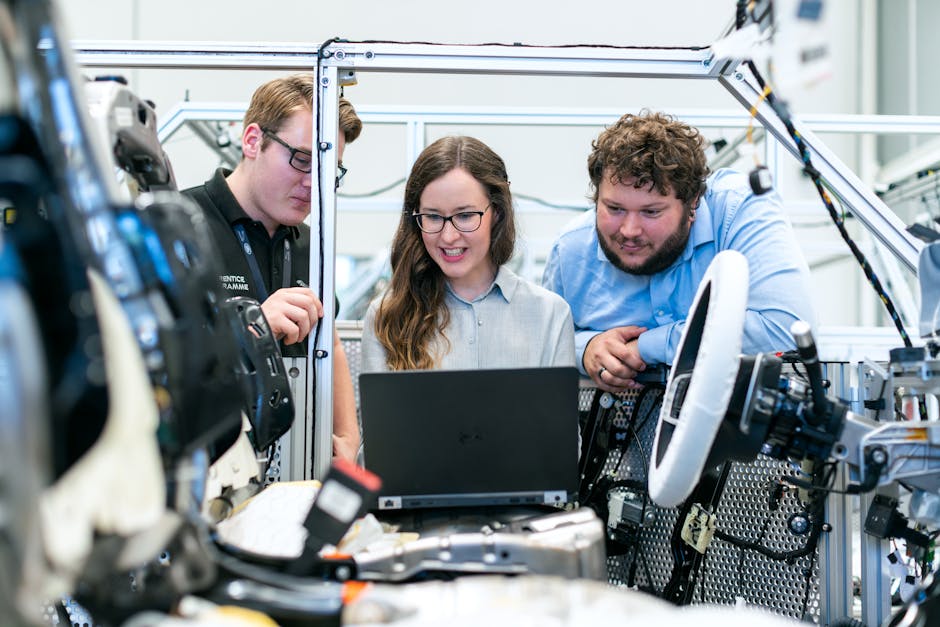AI-Powered Peer Learning: Transforming Online Education Together
In the world of online education, AI-powered peer learning is not just a buzzword—it's a transformative force reshaping how students collaborate and build essential skills. As we plunge deeper into 2025, traditional classroom methods are giving way to innovative, technology-driven solutions that leverage artificial intelligence to create engaging and effective learning environments. But what does this mean for students, educators, and the landscape of online learning as a whole?
The Rise of Peer Learning and Its Importance in Education

Peer learning has long been recognized as an effective educational strategy. When students collaborate, they don’t merely learn from the instructor; they share knowledge, critique one another, and nurture a deeper understanding of the material. In online courses, where physical cues and face-to-face interactions are absent, peer learning becomes even more critical.
Research shows that people retain information better when they teach it to someone else, and this holds true in virtual settings as well. But the challenge remains—how can we facilitate and enhance peer learning when physical presence is not an option? Enter AI.
How AI is Enhancing Peer Learning Experiences

Artificial intelligence can play a substantial role in creating personalized and engaging peer learning experiences. For example, AI algorithms can analyze students’ participation patterns and suggest ideal peer collaboration opportunities. Imagine a digital assistant that can recommend partners based on complementary learning styles or shared interests, facilitating productive group dynamics.
Moreover, AI can provide real-time feedback during collaborative exercises by assessing contributions and interactions. This allows participants to refine their approaches and deepen their understanding, leading to sharper critical thinking skills and more effective communication.
Emotional and Social Skills Development Through AI

As we transition into 2025, the incorporation of AI in education not only focuses on knowledge acquisition but also emphasizes the development of soft skills. Collaborative skills, such as empathy, active listening, and emotional intelligence, are fundamental for future workplaces.
One way to enhance these skills is through AI-powered simulations that mimic real-world scenarios. For example, virtual environments where students must engage in discussions and decision-making can help enhance their emotional intelligence. For insights on integrating emotional intelligence into online learning, take a look at our resource on emotional intelligence in online education.
Encouraging Collaboration with AI-Driven Tools

Many platforms now incorporate AI tools that encourage collaborative learning. For instance, software such as Discord or Slack can be used alongside educational content to create community forums where students share insights and discuss course materials. With the help of AI, these platforms can facilitate group formation based on interests, creating a more engaging and fulfilling learning experience.
In addition, we can harness AI to gamify collaborative projects. Gamification can increase motivation, making learning more enjoyable while simultaneously helping students forge significant connections. This approach is particularly effective in attracting diverse learners and catering to various learning preferences. Explore how gamification strategies can ignite curiosity and break barriers in our article on gamification for online engagement.
Embracing Diverse Learning Styles with AI

Every student learns differently, and AI can adapt the peer learning experience to accommodate these variances. By analyzing individual performance data, AI can curate study groups that allow students to leverage their strengths collectively while supporting their weaknesses.
The importance of cognitive diversity in course design cannot be overstated. When we embrace the myriad ways students process information, we can create more inclusive and effective online learning environments. For deeper insights, check out our discussion on cognitive diversity in online learning.
Overcoming Challenges in Virtual Peer Learning

Despite the many advantages of collaborative online education, certain challenges persist. For instance, differences in time zones can lead to scheduling conflicts among team members from different regions, impacting collaboration.
AI can alleviate this issue by suggesting optimal meeting times for participants across various geographies. Additionally, AI-powered project management tools can help streamline communication, ensuring that everyone is aligned and aware of their responsibilities.
Moreover, there is the potential problem of misinformation. Sometimes, students may share inaccurate information. AI can help flag misleading content or provide additional resources to validate claims made during discussions, maintaining the integrity of the learning experience.
Cultivating a Community of Learners

The essence of online education lies in the community formed among students and educators. AI's ability to create a sense of belonging is key here. By analyzing student behaviors and interactions, AI can identify those who are less involved and provide reminders or recommendations for deeper engagement.
A stronger focus on community engagement can enhance overall learning outcomes. Educators can curate activities that strengthen mutual support and accountability, leading to better retention and success rates among students. Discovering how to integrate these social aspects in your lessons can be explored further in our article on embracing community in online learning.
Case Study: AI Success in Online Learning Programs

Let’s consider successful implementations of AI-powered peer learning in real-world scenarios. Institutions using platforms like Coursera or edX have incorporated peer reviews into their courses, allowing students to assess each other's work using AI-generated rubrics. This initiative has not only motivated students to engage with their peers' outputs but has also reduced grading workload for instructors.
An interesting case study involves a university that paired AI algorithms with traditional peer evaluations. Students reported feeling more confident in their assessments, leading to increased participation and interaction.
The Future of Peer Learning with AI

The future of education looks promising with the ongoing development and integration of AI-driven tools and strategies to enrich peer learning experiences. As we approach 2025, we should anticipate several trends:
-
Increased Personalization: AI systems will become more sophisticated, tailoring peer learning experiences to individual learning preferences and styles, optimizing group dynamics, and contributing to better educational outcomes.
-
Enhanced Emotional Intelligence Training: Indeed, AI will enhance curriculum designs to incorporate training tailored toward soft skills development, addressing both cognitive and emotional needs of students.
-
Global Learning Communities: The ability to transcend geographical barriers means we can look forward to increasingly diverse collaborations of students worldwide, sharing knowledge, perspectives, and cultural insights.
-
Data-Driven Decision Making: Real-time data analytics will shape pedagogical approaches and curriculum adjustments, making education more responsive to the evolving needs of learners.
-
Focus on Lifelong Learning: As global markets shift and evolve, the demand for learners to adapt functional skills will ignite a culture of lifelong learning, making peer collaboration with AI a necessity.
Final Thoughts
AI-powered peer learning is revolutionizing how we approach education in online contexts. By encouraging collaboration, enriching emotional intelligence, and blending personalized learning experiences, we're not just preparing students academically but holistically.
In a rapidly evolving educational landscape, leveraging AI effectively will be key to creating effective, engaging, and transformational online learning environments. As educators and learners alike, our responsibility is to embrace these innovations, ensuring education remains as vibrant and diverse as the individuals it serves.
With the rapid advancements in AI and educational technology, you might wonder what next steps to take. Consider exploring platforms that offer peer learning opportunities, or dive deeper into personalization by using adaptive learning systems. You may also want to stay informed about emerging trends impacting education technology.
For insights on future trends in online education, don’t miss our exploration of how AI transforms the learning landscape in our article on the future of learning through AI.


